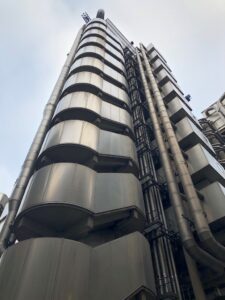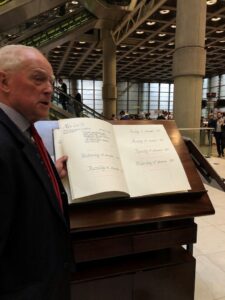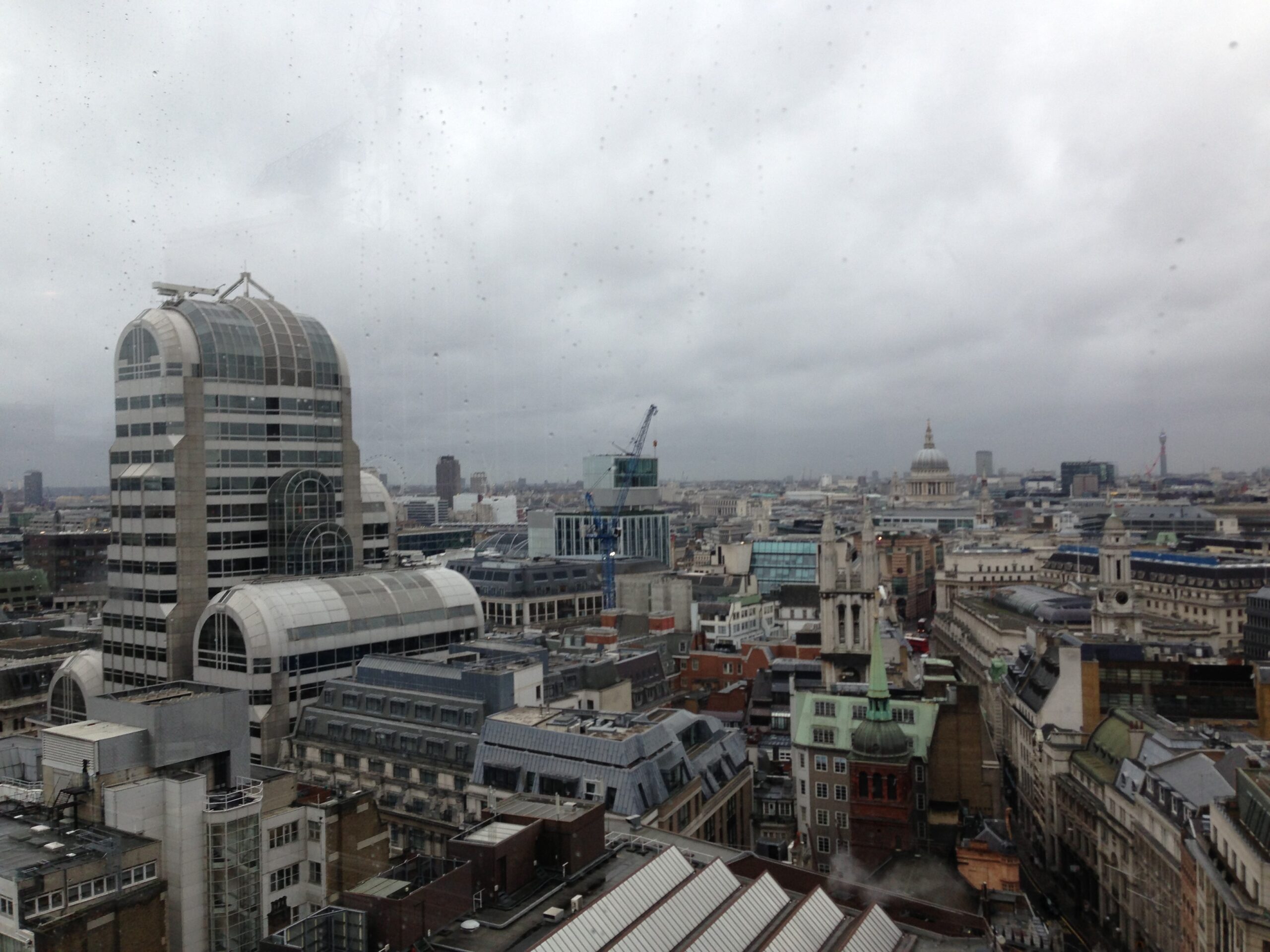Lloyd’s of London – From a 17th-century coffee shop to the world’s premier insurance marketplace
Before the seminar, I had no idea what Lloyd’s of London was, let alone that it is one of the most famous buildings in the world. I quickly learned it was unique for a variety of reasons. Firstly, the term Lloyd’s refers to just the building, hence the expression commonly used by those in the insurance industry is “insure at Lloyd’s”, not buy insurance from Lloyd’s. It is a marketplace for underwriters or the insurance companies, and brokers, agents who try to get the best deal for their clients, to meet and make deals. The Lloyd’s staff of 900 only serves to ensure compliance with regulations and that everything within the building continues to work smoothly.
In the Heart on London

The ducts and staircases of Lloyd’s can be seen from the outside
Lloyd’s as we know it today is a far cry from where it started in the 1600s as Lloyds Coffee Shop. In the beginning, sea captains would come by the shop while docked on the Thames River in London and share stories of sinking ships and how the captains were liable when gold, supplies and other valuable resources were lost. Bankers and insurance underwriters would overhear these conversations. Soon they saw an opportunity in providing insurance for these ships, running this business out of the coffee shop. William Lloyd, owner of the coffee shop, began charging rent for the booths the businessmen used, which is what they are still called today.
A rich history in London

The Lutine Bell in the middle of Lloyd’s
However, the seafaring heritage is honored by the staff of Lloyd’s, still called waiters from the coffee shop days, who maintain a Loss Book of daily sinking ships around the world. The entries from today’s date 100 years ago is showcased in a glass case. It is amazing to compare to today’s book, where there are far fewer sunken ships.
In addition, the Lutine Bell, recovered from the HMS Lutine in 1858, now hangs in the center of Lloyd’s building. It was traditionally rung when news of an overdue ship arrived, once if it sunk and twice if it returned. Now the bell is only rung for ceremonial purposes such as the death of a member of the Royal Family or global disasters such as 9/11, the London bombings, and at the start and end of the two minutes silence on Armistice Day.
To the future

Our presenter shows us recent entries in the Loss Book
The opportunity to visit Lloyd’s of London was a once in a lifetime experience that opened my eyes to the world of the insurance marketplace. The blend of past and future is reflective of the British culture that cherishes tradition but also fosters innovation – after all, who knows what unique person or item might be insured at Lloyd’s next.

